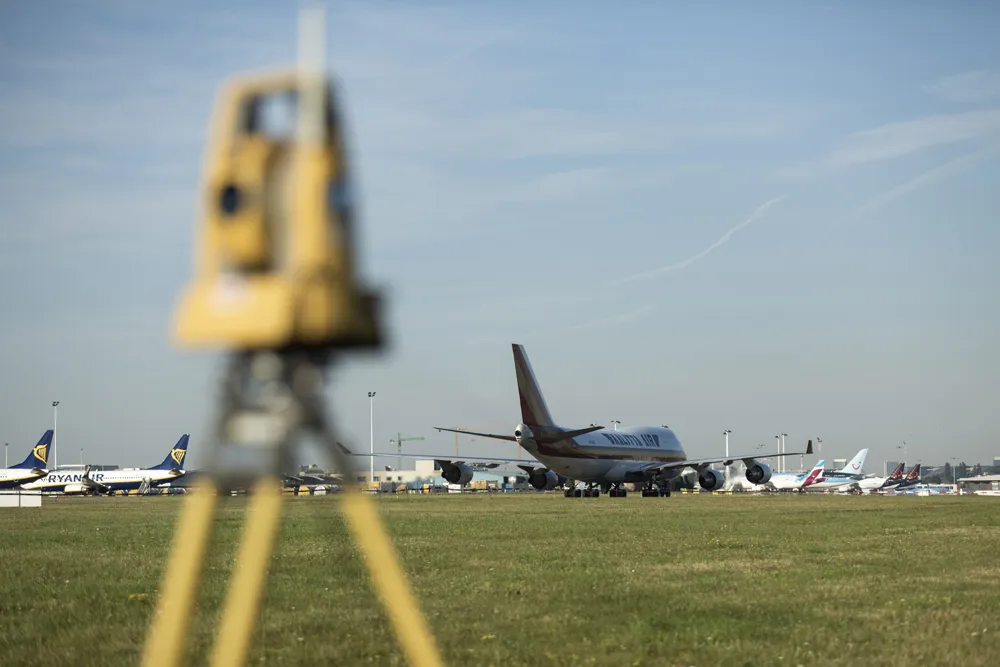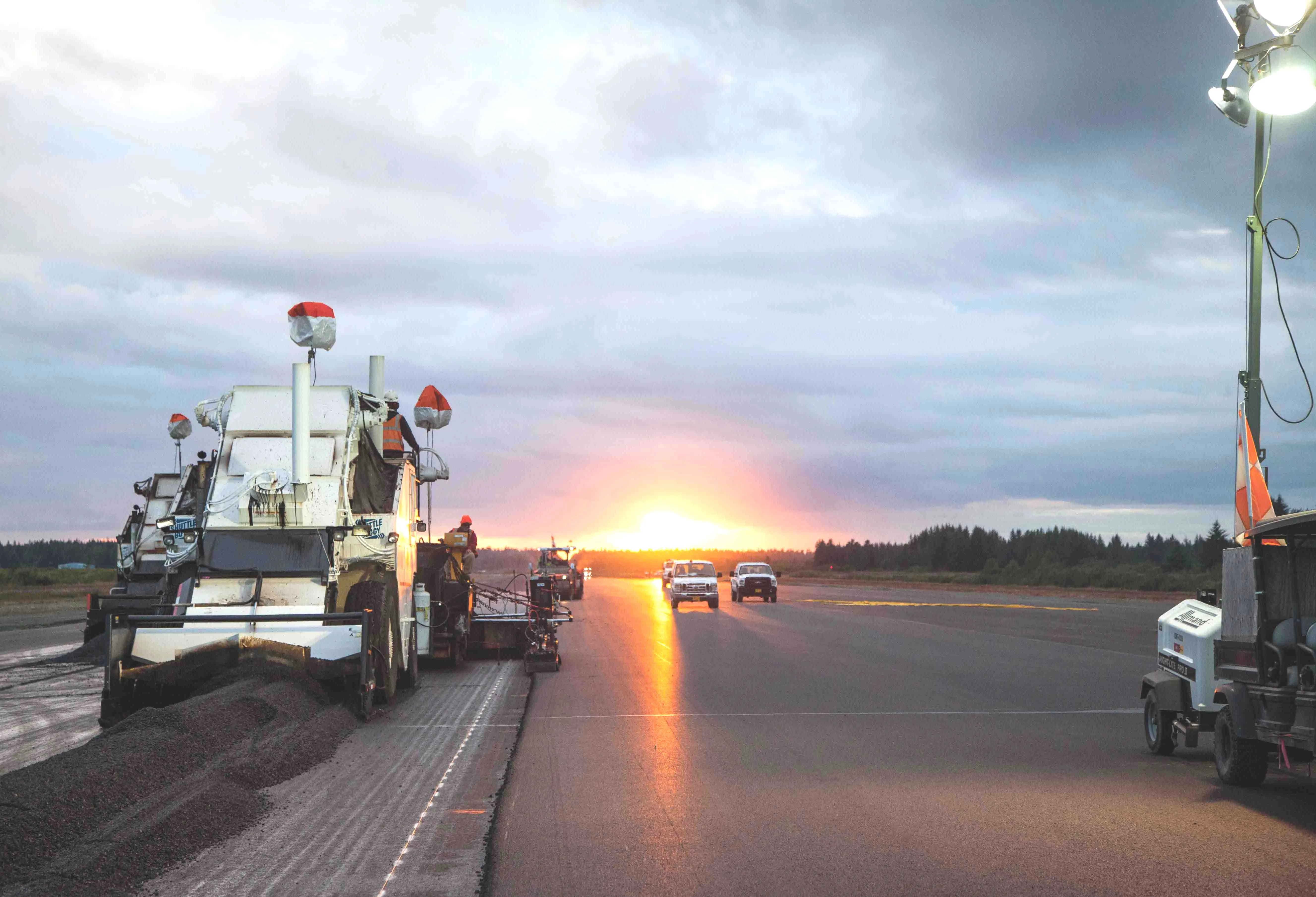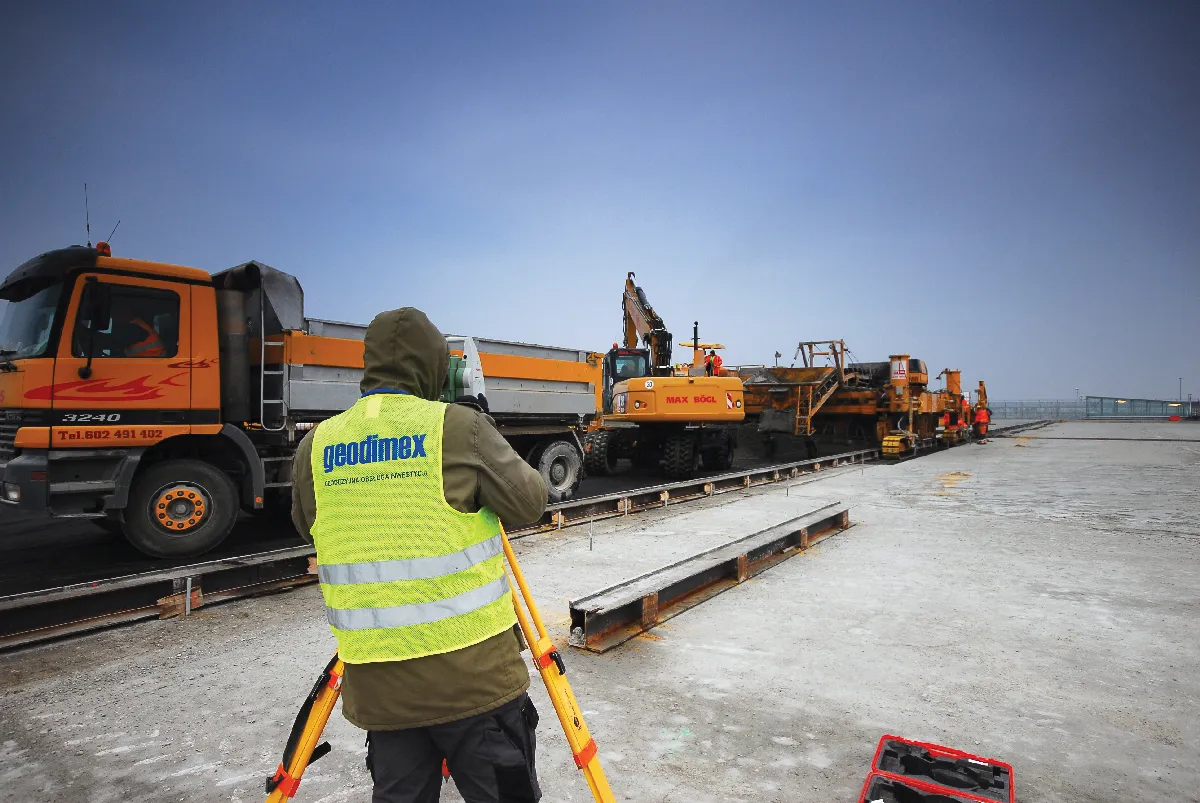
Asphalt paving of the Vancouver International Airport’s north runway has begun, with around 150m increments completed each night.
The asphalt lift will finish with a slope grade to allow the safe landing and takeoff of aircraft during the north runway’s daily operating hours, according to airport officials. As part of the paving works, crews are also removing, rising and reinstalling runway lights and reapplying paint markings before the runway is returned to service each day.
Global Highways reported in January that Lafarge Canada, a member of the Holcim Group, had been selected as the paving subcontractor for Vancouver International Airport’s North Runway Modernisation Programme. The company had previously worked on a similar project for the south runway, milling and paving around 39,000 tonnes of asphalt pavement.
On the north runway, Lafarge Canada is working in collaboration with Kiewit for a full asphalt overlay of the runway and connecting taxiways, with construction scheduled to begin in the this spring and ending in the autumn. Work is planned to coincide with night time runway closures from 10pm to 7am in order to minimise disruptions to flights.
YVR operates a dual runway system, with aircraft typically using the south runway for departures and north runway for arrivals. But this has been altered depending on construction activity and requirements.
In preparation for the start of paving, crews set up the airside laydown site, created access roads and conducted environmental testing around the construction site. This required the programme team to work together seamlessly as planned and complete the early works.
Prior to all this, in March, crews undertook a trial exercise. This trial exercise provided teams the opportunity to refine strategies and plans to safely maximise productivity within the limited construction window each night.
Safety and security remain our top priorities. YVR said it continues to conduct training sessions with its team and contract partners. Training includes wildlife protection, how to safely navigate airside areas and YVR’s Foreign Object Debris (FOD) management programme.
Originally opened in 1996, the north runway will receive a series of upgrades to enhance operational resiliency. The deal, estimated at around US$93 million, will upgrade the runway and improve drainage and electrical systems.
Vancouver Airport announced last October that it had chosen Kiewit to deliver paving and construction services. According to the airport administration, the 9941 foot North runway handles around 370 aircraft movements daily during peak times. The runway and connecting taxiways have around 230mm of asphalt overlay. Asphalt trucks will be timed to ensure optimal flow and noise management, meaning trucks will not come all at once or in close sequence, noted the airport administration.
Airport officials also said this month that there are ongoing sessions with Musqueam for Cultural Awareness Training and Chance Find procedures. Musqueam is a First Nation whose traditional territory encompasses the western half of what is now Greater Vancouver, including the airport. The chance finds procedures are essential for respectful handling of suspected archaeological or culturally sensitive materials that may belong to First Nation groups and have been accidentally unearthed during construction.
Over the summer, crews will focused on the asphalt overlay and working towards finishing the first pass of the runway slated for completion in June.
Crews will be working on other major infrastructure elements, including subdrain work to upgrade and replace elements of the runway water drainage system, which will improve water removal from the runway surface. Crews will also prepare for the raising of the electrical work in and around the runway.
Visit www.yvr.ca/northrunway for more information about the programme.









